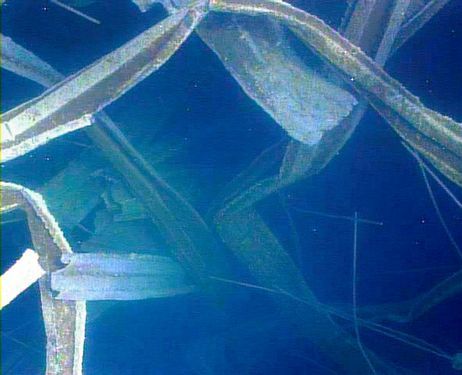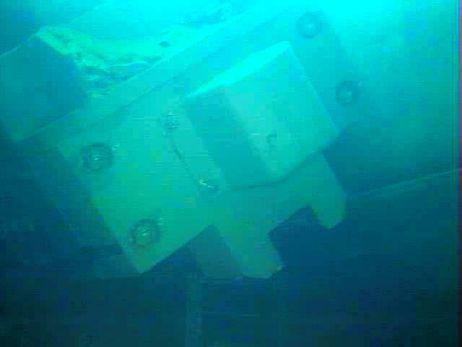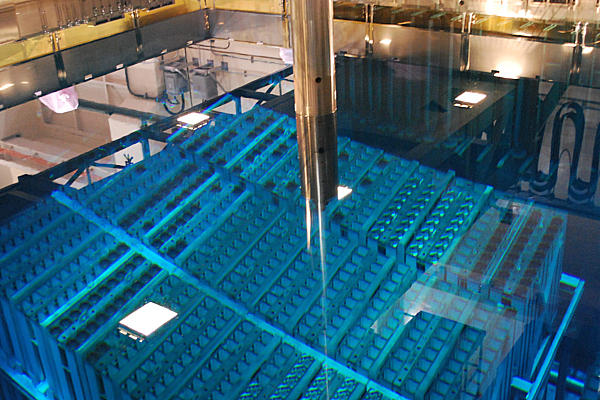Sunday, November 24, 2013
fukushima released up to 100,000 times more cesium-137 in surface ocean waters than Chernobyl or nuclear weapons testing
By
CNu
at
November 24, 2013
0
comments
![]()
Labels: cull-tech , weather report , What IT DO Shawty...
Friday, November 22, 2013
long overdue time for a steer roast...,
By
CNu
at
November 22, 2013
3
comments
![]()
Labels: common sense , What Now?
the treason trilogy: capitalism, terror, doom...,
By
CNu
at
November 22, 2013
0
comments
![]()
Labels: de-evolution , institutional deconstruction , Peak Capitalism
Thursday, November 21, 2013
as for the people and planet being subordinated to power and profit - they barely even register
By
CNu
at
November 21, 2013
17
comments
![]()
Labels: People Centric Leadership , presstitution , propaganda
Wednesday, November 20, 2013
is ethical revitalization the secret to avoiding collapse?
By
CNu
at
November 20, 2013
2
comments
![]()
Labels: not gonna happen...
the bugs in darwin?
By
CNu
at
November 20, 2013
0
comments
![]()
Labels: de-evolution , Genetic Omni Determinism GOD , narrative
how, if, and why species form?
By
CNu
at
November 20, 2013
4
comments
![]()
Labels: de-evolution , Genetic Omni Determinism GOD , narrative
Monday, November 18, 2013
sleepers will find collapse swift, brutal, and shocking...,
By
CNu
at
November 18, 2013
5
comments
![]()
Labels: Collapse Casualties , weather report
remove tepco before removing the fuel rods
By
CNu
at
November 18, 2013
2
comments
![]()
Labels: corporatism , egregores , unspeakable
there were not just three, there were EIGHTY damaged fuel assemblies at fukushima, seventy in reactor one
According to Kahoku Shinpo, a Fukushima local paper, TEPCO admitted on November 15, 2013 that there are 70 fuel assemblies with damaged fuel rods in the Reactor 1 Spent Fuel Pool, located on the operating floor (top floor) of the reactor building whose air radiation levels are measured in millisievert/hour and sievert/hour (first floor).
There are also three such fuel assemblies in the Reactor 2 SFP, and four of them in the Reactor 3 SFP.
Total 80 spent fuel assemblies in the SFPs in Reactors 1 - 4 are damaged.
The damages had been there long before the March 11, 2011 accident, and TEPCO claims it properly notified the national government as they discovered the damages. But the company has come clean in public only now.
Kahoku Shinpo article below suggests that the oldest of such damaged fuels may have been there for 40 years in the Reactor 1 Spent Fuel Pool. (Reactor 1 started generating electricity in 1971.)
Reactor 1 at Fukushima I Nuke Plant is TEPCO's oldest nuclear reactor; it was entirely the project by General Electric of the US, a turnkey.
By
CNu
at
November 18, 2013
0
comments
![]()
Labels: cull-tech , unspeakable
a visual tour of the fuel pools of fukushima...,
 |
| tangled wreckage inside the pool |
The pools at each reactor are thought to have contained the following amounts of spent fuel, according to The Mainichi Daily News:
- Reactor No. 1: 50 tons of nuclear fuel
- Reactor No. 2: 81 tons
- Reactor No. 3: 88 tons
- Reactor No. 4: 135 tons
- Reactor No. 5: 142 tons
- Reactor No. 6: 151 tons
- Also, a separate ground-level fuel pool contains 1,097 tons of fuel; and some 70 tons of nuclear materials are kept on the grounds in dry storage.
Reactor 3 . . . uses highly dangerous mixed oxide fuel, Tokyo Electric has reported.
***
No. 3 reactor is the only one at the crippled power station that was powered by the plutonium-uranium MOX
 |
| 35 ton machine blocking the pool |
Unit 3 is worse [than No. 4]. It’s mechanically, it’s rubble, the pool is rubble. It’s got less fuel in it. It faces the same problem. Structurally the pool has been dramatically weakened. And, god, nobody has even gotten near it yet.
The operator of the crippled Fukushima Daiichi nuclear power plant on Friday found that a 35-ton machine had dropped inside the spent fuel pool of the No. 3 unit, possibly because of a hydrogen explosion that occurred in the early stage of plant’s nuclear accident last year.
Tokyo Electric Power Co., commonly known as TEPCO, reported the finding after placing a camera inside the water-filled pool the same day to prepare for removing, as part of the decommissioning process, the nuclear fuel stored there.
One photo showed part of the machine, originally located above the pool and used to insert and remove fuel, appeared to have dropped onto the nuclear fuel storage racks.
By
CNu
at
November 18, 2013
0
comments
![]()
Labels: not a good look , unspeakable
Sunday, November 17, 2013
dubya picking up an honorarium from the messianic jews...,
By
CNu
at
November 17, 2013
0
comments
![]()
Labels: Race and Ethnicity , the wattles , theoconservatism
a child-rape assembly-line
By
CNu
at
November 17, 2013
0
comments
![]()
Labels: the wattles , theoconservatism , What IT DO Shawty...
Saturday, November 16, 2013
google map reveals the devastating rate of deforestation across the globe..,
By
CNu
at
November 16, 2013
0
comments
![]()
Labels: weather report , What Now?
seen in the scene from the anthropocene in the philipines....,
By
CNu
at
November 16, 2013
0
comments
![]()
Labels: Collapse Casualties , What Now?
awareness required to handle climate change impossible...,
By
CNu
at
November 16, 2013
0
comments
![]()
Labels: weather report , What Now?
Friday, November 15, 2013
too hot to touch the problem of high-level nuclear waste
By
CNu
at
November 15, 2013
2
comments
![]()
Labels: unspeakable
visit sunny chernobyl
By
CNu
at
November 15, 2013
0
comments
![]()
Labels: unspeakable
Thursday, November 14, 2013
unspeakable atomic plague inexorably spreading...,
By
CNu
at
November 14, 2013
0
comments
![]()
Labels: cull-tech , Great Filters , weather report
highest-stakes pick-up sticks game of all time...,
By
CNu
at
November 14, 2013
0
comments
![]()
Labels: cull-tech , Great Filters , unspeakable
I Can't Wait Until The "Deliberative" Body Tangles With Col. Gabbard...,
OMG. 😂😂😂😂😂😂 pic.twitter.com/EOZitH70hO — Juanita Broaddrick (@atensnut) January 15, 2025
-
theatlantic | The Ku Klux Klan, Ronald Reagan, and, for most of its history, the NRA all worked to control guns. The Founding Fathers...
-
Video - John Marco Allegro in an interview with Van Kooten & De Bie. TSMATC | Describing the growth of the mushroom ( boletos), P...
-
dailybeast | Of all the problems in America today, none is both as obvious and as overlooked as the colossal human catastrophe that is our...







